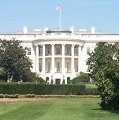Government Grants
Business Grants
Home Owner Programs
Federal Programs
About Us
Page 2
A full time student (60% + of a full course load) may apply through the same offices but will be considered for both Federal and Provincial support (depending upon the province in question) though this would have to repay both the loans. The difference between the Provinces and Territories is prevalent here as these provinces: Alberta, British Columbia, Manitoba, New Brunswick, Newfoundland and Labrador, Nova Scotia, Prince Edward Island and the Yukon all would entail paying the loans back separately. If you are from Ontario or Saskatchewan then you would make one payment back to the NSLSC which would cover the total amount borrowed from both the federal and provincial programs.
| Sponsored Links |
|
|
The course you wish to enroll on must be listed on the Master List of Designated educational Institutions – it is strongly advised that you ensure the establishment you wish to attend is recognized by your provincial provider and the course choices meet the necessary requirements before you commit to it. This also applies if you wish to attend an overseas establishment.
Your personal financial status will determine the amount of assistance you will be offered with the Federal loan system covering up to 60% of the total you are assessed as needing and the provincial system contributing up to the remaining 40%. Your “needs†are assessed by the provincial office when you apply as they handle the initial application and will forward you the loan documents. Once the Provincial or territorial Student Assistance office has received and processed your application, it will establish the amount of loan you are entitled to apply for and carry out credit checks. Once approved, your Canada Student Loan will be administered by the National Student Loans Service Centre (NSLSC) through to its termination (full repayment).
This agency is responsible for all loans supplied since 1st August 2000 and has two distinct sections. The Public Institutions Division (looking after anyone attending a course at a Public facility such as a University or Community college) and the Private Institutions Division (for those who are receiving instruction at a privately funded facility like a technical college or trade school).
For more, detailed information on Student Loans in Canada please visit http://www.onestopimmigration-canada.com/student_loans.html
About The Author
Dave Lympany and his family arrived in Canada in 2003 as permanent residents and have developed a Onestop information resource for Canadian Immigration and Life in Canada – http://www.onestopimmigration-canada.com.
|
Student Loans
Back to Page 1
Additional Government Grants Resources
Zambia Economic Resilience Program for Improved Food Security
The Zambia Economic Resilience Program for Improved Food Security is designed to implement innovative techniques and approaches that would hopefully enable the community's most vulnerable and poor rural families to improve food security by strengthening their economic resilience.
California Homebuyer's Downpayment Assistance Program for First Time Home Buyers
The California Homebuyer's Downpayment Assistance Program is a deferred payment junior loan that can be used in conjunction with other CalHFA housing programs. It provides borrowers with funds amounting to 3% of the actual value of the property that they wish to inquire in order to cover the downpayment costs.
Environmental Exposures and Health: Exploration of Non-Traditional Settings Program
In according with this mission, the National Institutes of Health has partnered with the National Institute of Nursing Research (NINR) and the National Institute of Environmental Health Sciences (NIEHS) to establish the Environmental Exposures and Health: Exploration of Non-Traditional Settings Program.
Homebuyer Mortgage Program for First Time Homebuyers in Connecticut
The Connecticut Housing Finance Authority has been administering the Homebuyer Mortgage Program for First Time Homebuyers. The program is capable of offering home loans and below-market interest rates to first time homebuyers who reside in Connecticut and who are planning to acquire a property that is located in Connecticut.
United States Agency for International Development: Citizen Engagement and Elections Project in Mongolia
The Citizen Engagement and Election Projects in Mongolia aims to encourage increased citizen participation, mobilization and education during the months prior to the Mongolian parliamentary elections in 2012.
Government Grants Within The United States Health Sector
The health care system in the US is as diverse as it is all-encompassing. A huge number of health care facilities are now owned by private sectors while a huge chunk of health insurance plans are primarily provided by the government in the public sector.
Building a Medical Home for Multiply Diagnosed HIV positive Homeless Populations - Demonstration Sites Project
The HRSA has recently constituted the establishment of a new initiative entitled the Building a Medical Home for Multiply Diagnosed HIV positive Homeless Populations – Demonstration Sites Project.
Social Entrepreneurship
Spotlight
When it Comes to Social Enterprises, Failure is the Best Platform for Innovation

In the world of social enterprises, failure is a cringe-worthy moment nobody wants to talk about. But, social entrepreneurs can benefit from their failures.
